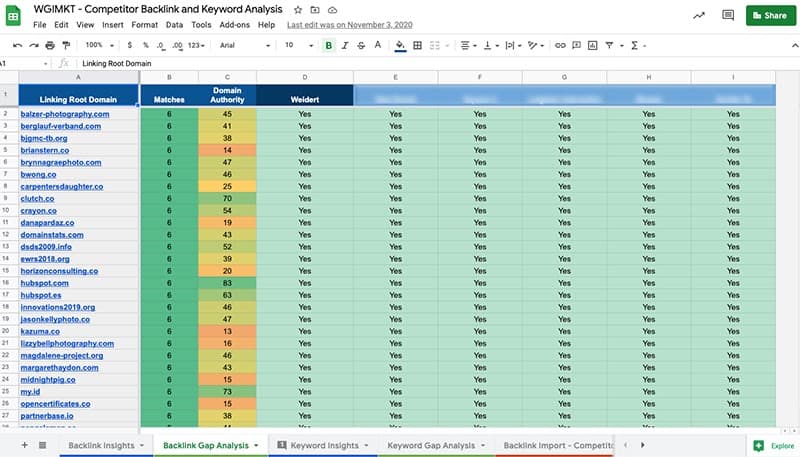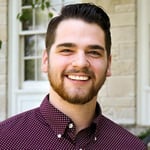How and Why Can Your Website Benefit From a Backlink Gap Analysis?
Written by
Backlinks are the links from other websites to the content on your site, such as content-rich blog articles, pillar pages, and landing pages. They’re also called incoming links or inbound links — and they’re an important reflection of your organic search performance.
Search engines view backlinks as votes of confidence in the value of your content, so both the number and quality of backlinks from authoritative publications and other important sources in your industry contribute to your site’s authority — and your SERP position.
In short, you not only want a good number of links; you also want them from the best possible sources within your industry.
The more relevant outside sources that link to your content, the greater your site traffic, SEO performance, credibility, and authority.
As part of your backlink strategy, it’s essential to conduct an SEO competitor analysis to get a clear understanding of how your backlinks compare to your competitors’.
What is a backlink gap analysis?
Analyzing backlinks enables you to measure and compare the difference in both the number and quality of links coming into your site against those of your biggest competitors.
If you think of each backlink as an upvote for your content, then it stands to reason that upvotes from the most authoritative industry sites and pages carry more weight than other backlinks.
High-quality, plentiful backlinks from authoritative referring domains create and uphold a virtuous cycle: not only does the referral traffic increase overall traffic volume to improve your SEO score, but that referral traffic is made up of higher quality prospects who may be more likely to engage and find more value in your content than other incoming traffic. That, in turn, increases your site’s domain authority even more.
Good backlinks also help get your site crawled by search engine indexing bots. So the goal is not merely to have more backlinks; it’s to have more and better backlinks than your competitors.
And your website backlink gap analysis is not a once-and-done chore or merely a matter of running reports. The analysis is the start of regular maintenance and attention to your backlinks. You need consistent action to stay competitive.
In addition, backlink analysis is just one aspect of your comprehensive, long-term strategy for establishing and maintaining thought leadership, relevance, and authority in your industry.
What tools are recommended to conduct a competitive backlink analysis?
Semrush is a valuable backlink analysis tool we use at Weidert Group. As part of its SEO competitor analysis, it offers a Backlink Competitors Report that helps you find your competitors and score your most important rival domains. Running this report is an important first step because you might discover a dark-horse competitor that wasn’t even on your radar.
Next, using the list of rival domains, you’ll want to analyze each competitor’s backlinks and export the data to a spreadsheet for further analysis. This analysis should include these key steps:
- Review which sites your competitors have links on that you do not, to see where gaps/opportunities are
- Create a priority list, organized by site relevance and/or domain authority so your link outreach is focused on the best opportunities to drive qualified traffic. Going after high-authority links will do more for your SEO than links from lower authority sites
- Strategize your outreach — it’s best practice to be personal and not use third party linking outreach services, but this is indeed time-consuming
- Offer value to their site’s readers and offer links in return, so there’s something in it for them

This analysis helps you identify concrete next steps you can take to improve your backlink profile relative to your competitors.
What do I do with the insights from the backlink analysis?
Once you see and understand how you compare to your competitors’ backlinks, you can proceed to the manual work — or another tool or service — to secure more and better backlinks.
How? Reach out! Use your networks, email contacts at authoritative sites, look for publication opportunities, guest posts on blogs, and more. Mentioning another company in a blog? Let them know. Odds are they’ll at least give you a shout-out on social media to promote the post.
To achieve results faster, first look for the low-hanging fruit. Quick-win backlink opportunities include seeking out unlinked mentions of your brand and reaching out to ask those organizations for the link along with the mention. Content Explorer from Ahrefs is another SEO competitor analysis tool you might find useful for this task.
Another approach, which Brian Dean at Backlinko calls the Moving Man Method, requires monitoring the competitive landscape in your industry niche. In a nutshell, when an authoritative competitor with a competing domain — one that has a really good resource that’s linked all over the place — changes its name or URL, goes out of business, or stops offering a service or updating a resource, you step in and create an up-to-date, even better resource.
Then, reach out to the sites where that resource is backlinked. Let them know their link is out of date, and offer your resource in its place. By pointing out the outdated link and providing an even higher-quality resource, you’re doing them a service, and they might repay your kindness with a backlink.
Why is a backlink gap analysis an important component of an inbound strategy?
First, it’s crucial to emphasize that backlinks are only one facet of your SEO strategy — but they are an important one. Your links to high domain ranking pages increase your domain authority.
Think about it: Within your industry, your prospects are reading these websites and publications, so having your content linked on them provides target audiences with yet another path to the valuable content you created with their needs in mind.
RELATED: SEO Checklist: 8 Must-Do Activities For Ongoing SEO Success
In addition to a greater likelihood of being found by the right audiences through referral traffic, links to your site on highly regarded industry pages also work to associate you, your brand, and your content with the level of quality that readers have come to expect from these authoritative sources. And that builds your credibility while exposing you to the right target audiences.
Remember, search engine optimization is a sustained, disciplined, comprehensive process. Every improvement contributes to the whole, and the path to your best possible SERP position requires consistent vigilance and effort.
Subscribe To Our Blog
Information. Insights. Ideas. Get notified every time a new Weidert Group blog article is published – subscribe now!
You May Also Like...

Search Engine Optimization
Optimize Your Industrial Website for AI Search

Marketing Technology
Why Unified Data Efforts Fail (and How Manufacturers Can Fix It)

Search Engine Optimization
How Falcon Rebuilt Industrial AI Search Visibility in 2025
Accelerate Your Growth with
Weidert Group
If you’re ready to explore a partnership, request a personalized consultation with our team.
